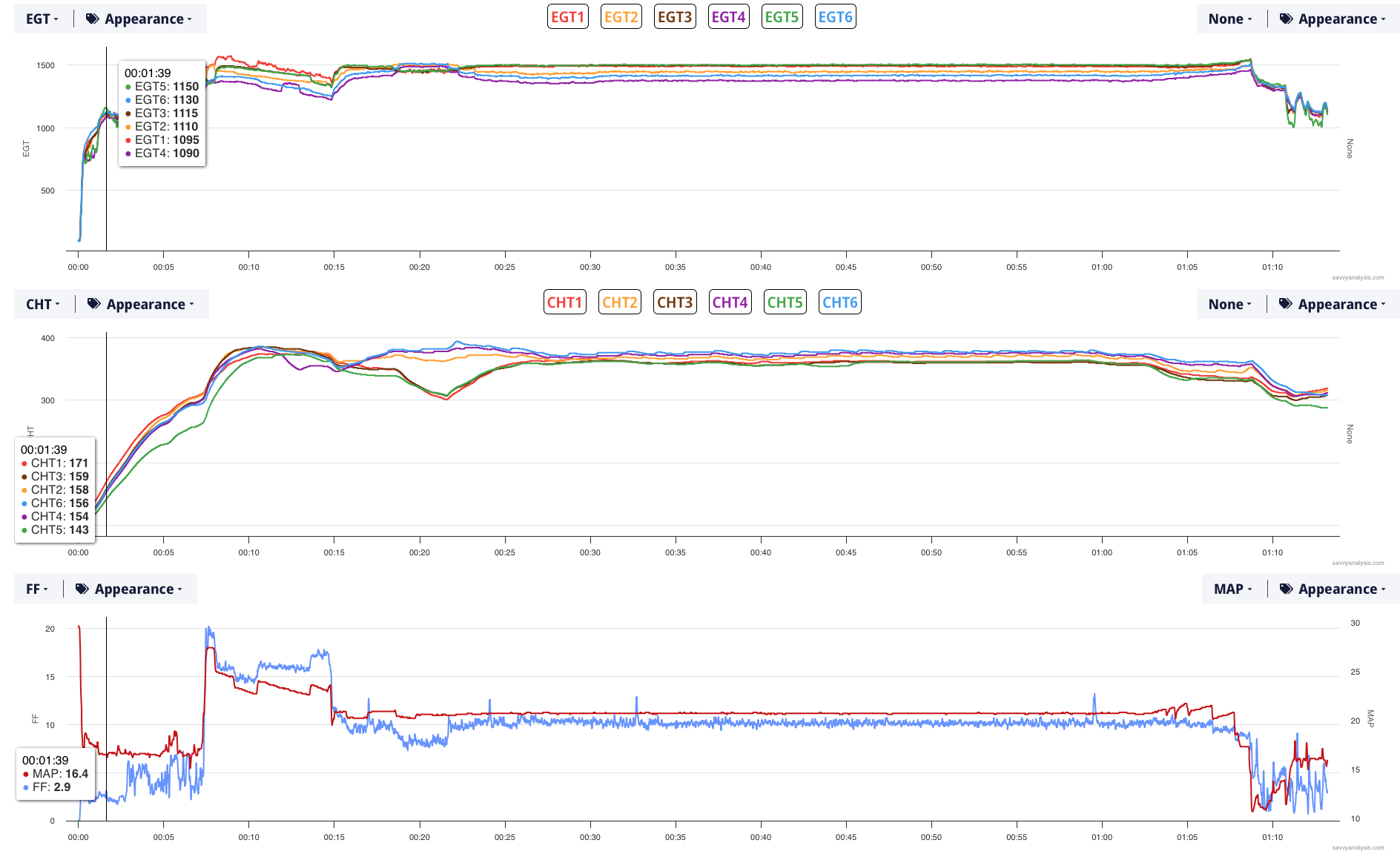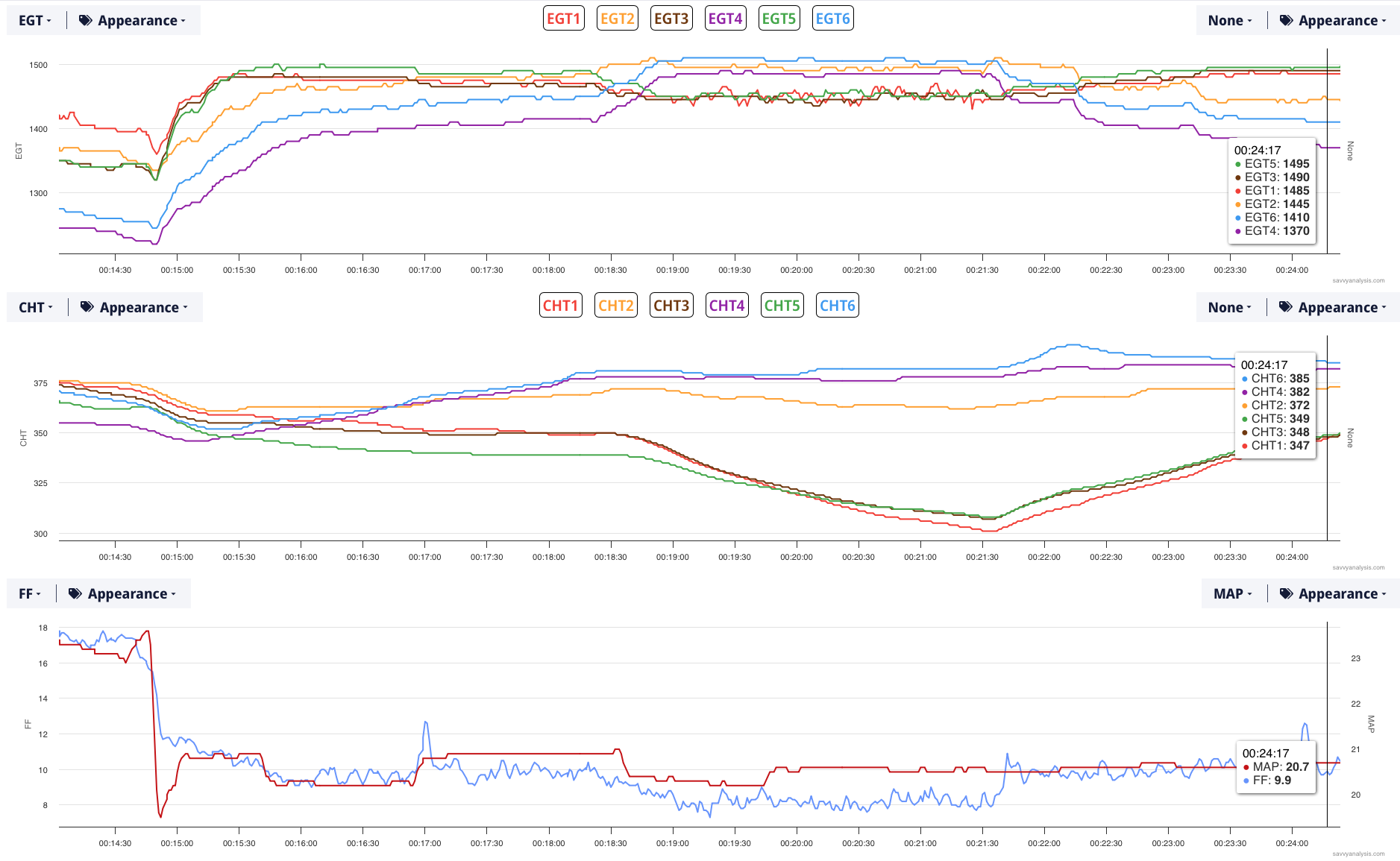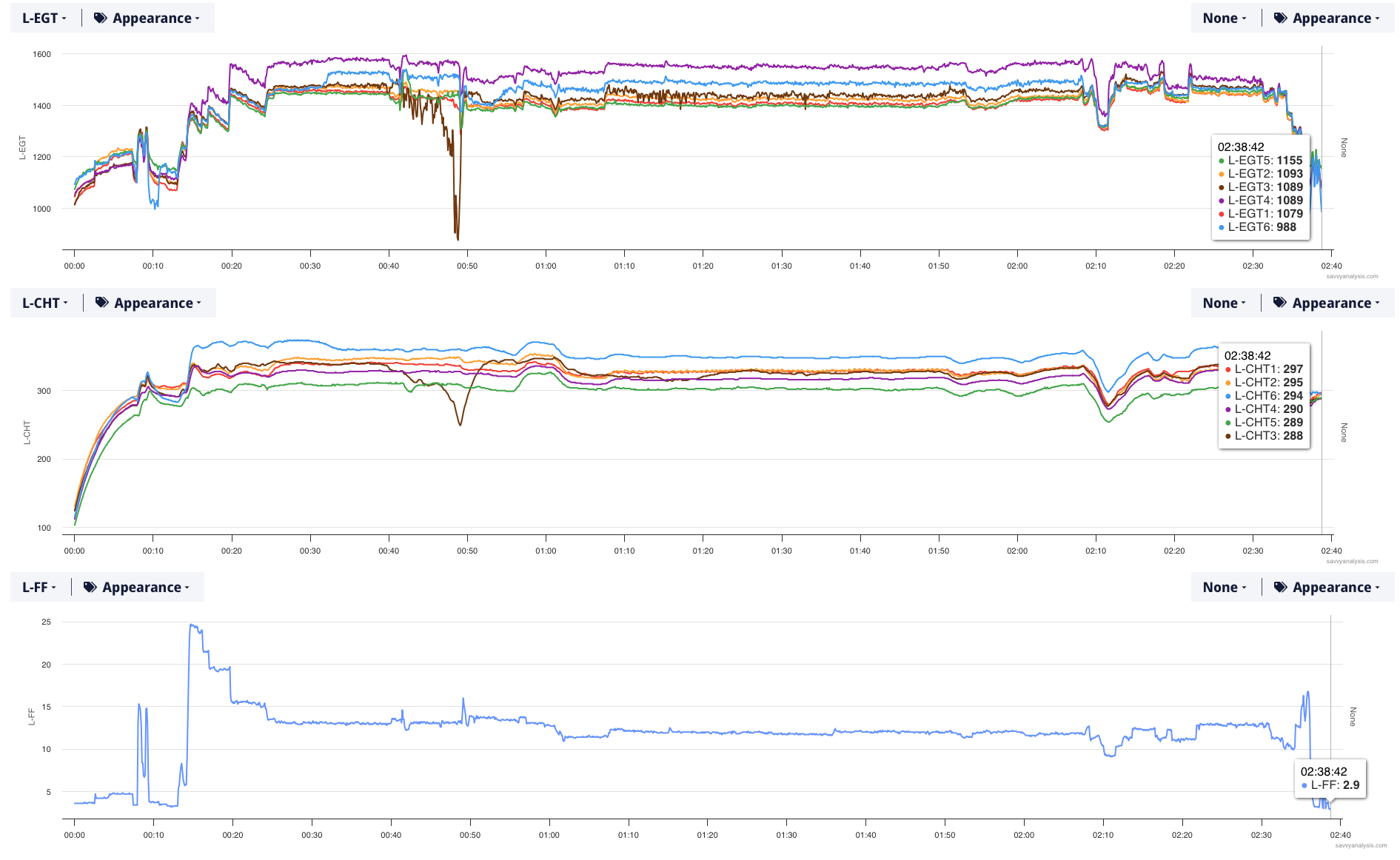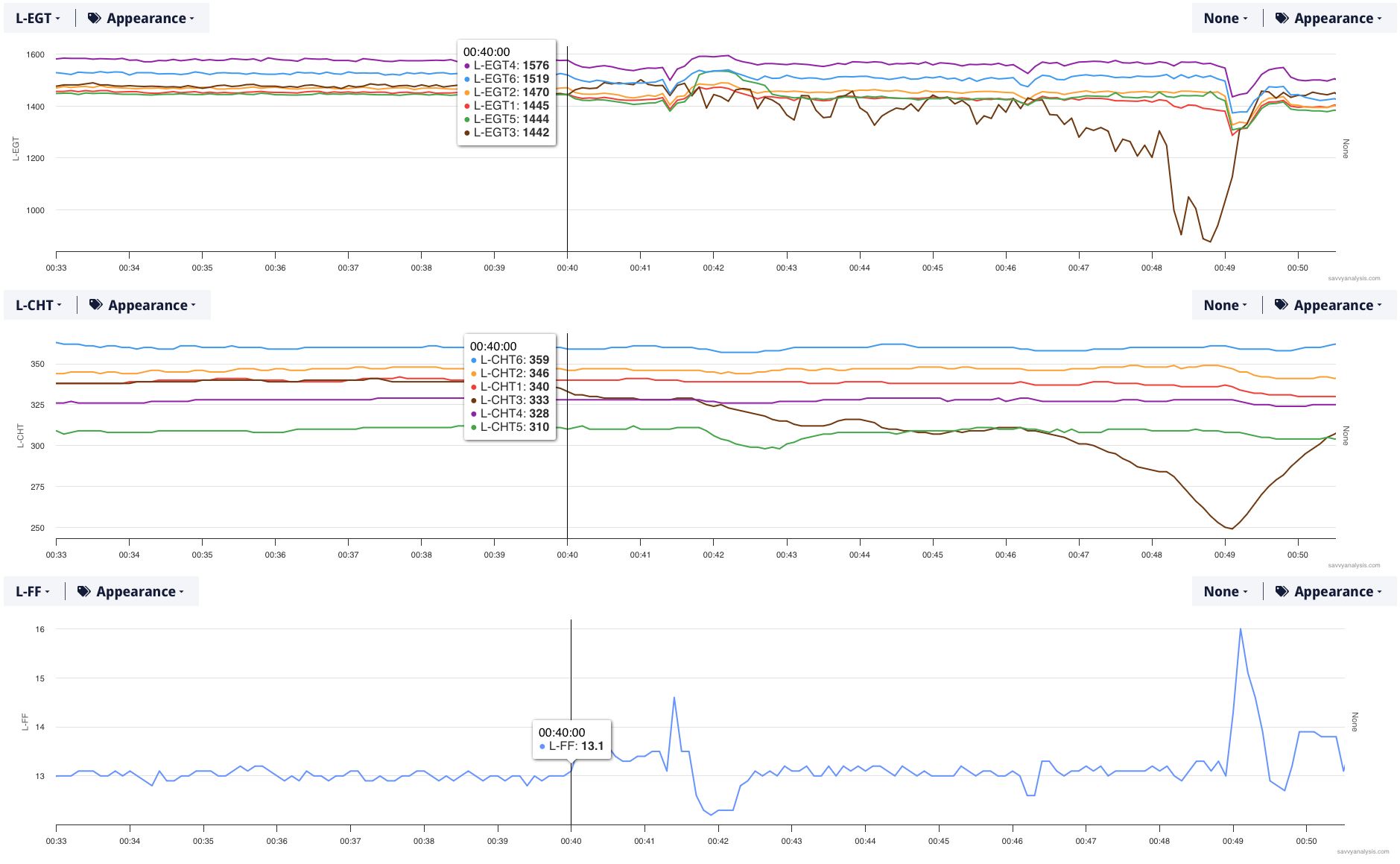When my grandmother would say “He sure sold you a bill of goods” there wasn’t anything good about it. The dictionary says the phrase has two meanings. The first is literal, meaning a list of merchandise. But the second meeting seems to be the one that caught on, meaning you’ve been the victim of deceit or worse. Lie detectors that measure respiration and blood pressure are about a hundred years old. Galvanic skin response was added later. Lately the consensus seems to be that voice stress analysis is more reliable than BP or GSR. Or maybe I’ve just been watching too many detective shows.
Savvy developed GADFly to distinguish reliable and accurate engine data from a bill of goods. When you upload a flight, we want to be able to tell you that everything looks great. But we also want to be able to tell you if one of your sensors is bad, or one of your plugs is fouled, or one of your injectors is clogged. And we want to be able to do this without adding dozens of analysts to pore over the data. Think about all the changes you make to throttle, RPMs and mixture from the moment you yell “clear prop” to the moment you starve the engine of fuel to shut it down. GADFly has to look at each of those and determine if that’s in the normal course of business or not. Fortunately, our team of human analysts is keeping up with your requests for analysis and we’re pretty good at separating reliable data from a bill of goods.
Before we get the engine data, I have a story. There is a particular person and a particular airplane at the center of it, but the lesson can apply to any owner and any airplane. Our owner was noticing fluctuations in RPM during certain phases of the flight. He decided to overhaul the prop governor. That didn’t fix it and the fluctuations were still there. This owner is an A&P so he did most of this work. He overhauled the propeller, de-sludged the crankshaft bore at the prop hub, replaced fuel and oil lines, replaced the fuel pump, replaced the prop control cable, replaced the intake gaskets, disassembled and inspected the primer, disassembled and inspected the gascolator, replaced the carburetor, inspected the oil breather line, the fuel shut off valve and the oil pressure relief valve. The fluctuations were still there. It was going on a year since he first noticed the fluctuations. That’s when he opened an analysis request ticket.
The data didn’t support the theory that the fluctuations were a result of weak or irregular combustion. We could see fluctuations in the RPM data. We looked hard for a correlation with some other parameter, and it just wasn’t there. We had this nagging feeling that it was the governor, but how could that be because that was the first thing the owner overhauled. Eventually, he came to the same conclusion and replaced the overhauled governor with a brand new governor. No more fluctuations. The owner sums it up like this — overhauling an accessory doesn’t necessarily remove it from the cause list.
First up is a Cessna 182 powered by a Continental O-470 and data from a Garmin G3X with a 1 second sample rate. Here’s a typical cruise flight with EGTs, CHTs, FF and MAP. The owner had recently installed a SureFly mag and wanted us to review the data. As we saw in the governor story, one dangerous assumption is that since something was overhauled, it can’t possibly be causing the problem. Another dangerous assumption is that because something new was added, it must be causing the problem.

I put the cursor on idle MAP. 16’4″ is higher than the 12-14″ we look for and indicates an induction leak. We pointed this out in our data review, and the owner said that they had been chasing the induction leak for a year – it had started after the carb was overhauled. Rich idle mixture can cause high idle MAP but the EGT rise at shutdown was about right, so we crossed idle mixture off the list. The owner had a new hangar neighbor, and the new guy asked our client why his airplane smelled like leaking gas every time he taxied by? Was there something in the data that would provide an answer? Here’s that same flight zoomed into the big pull at the 14 minute mark and the resulting EGT and CHT changes.

Our thinking was that 1-3-5 we’re already high going into the big pull, and at 18:30 when FF drops to around 8 GPH their power output drops dramatically. So the leak must be on that side, because if it were leaking at the carb, we should see it in all cylinders and not just one side. The shop posted that they were able to slide a feeler gauge between the carb flange and the engine manifold. So the decision was made to overhaul the carb – again. Remember, this all started after the first carb overhaul. When the carb shop did the flow test they found a bad seal, one of the floats was improperly seated and one of the jets was out of spec. Mike Busch’s most recent AOPA article is about maintenance induced failures. And here’s an older article.
Next is a Beech Baron 58 powered by Continental TSIO-520 engines with data from a JPI 790 twin with a 1 second sample rate. The report was intermittent engine roughness but the owner wasn’t sure if it was both engines or just one and which one. A quick look at the data answered that question. No issues with the R engine so this is a recent flight with EGTs, CHTs and FF for the L engine.

EGT 4 – the purple trace – is high throughout suggesting one of the plugs is not firing. EGT 6 – the cyan trace – jumps up at the 30 min mark suggesting one of those plugs fouled in flight. Then there’s the event with cylinder 3 – the brown trace – at the 40 minute mark. Let’s zoom in on that.

FF increases a little bit right at 40:00 and that triggers the misfire – so like they used to say in Rome, post hoc propter hoc. Or like we say now it’s probably the last thing you did. It must be a fuel problem. Except, it’s not acting like a fuel problem. And back to the first screenshot for a minute – all the jitteriness for an hour after this event looks like weak spark and not a fuel problem. And we have evidence of weak spark in other nearby plugs. But not enough weak spark across the board to suspect a mag. This looks like the plugs need some attention.